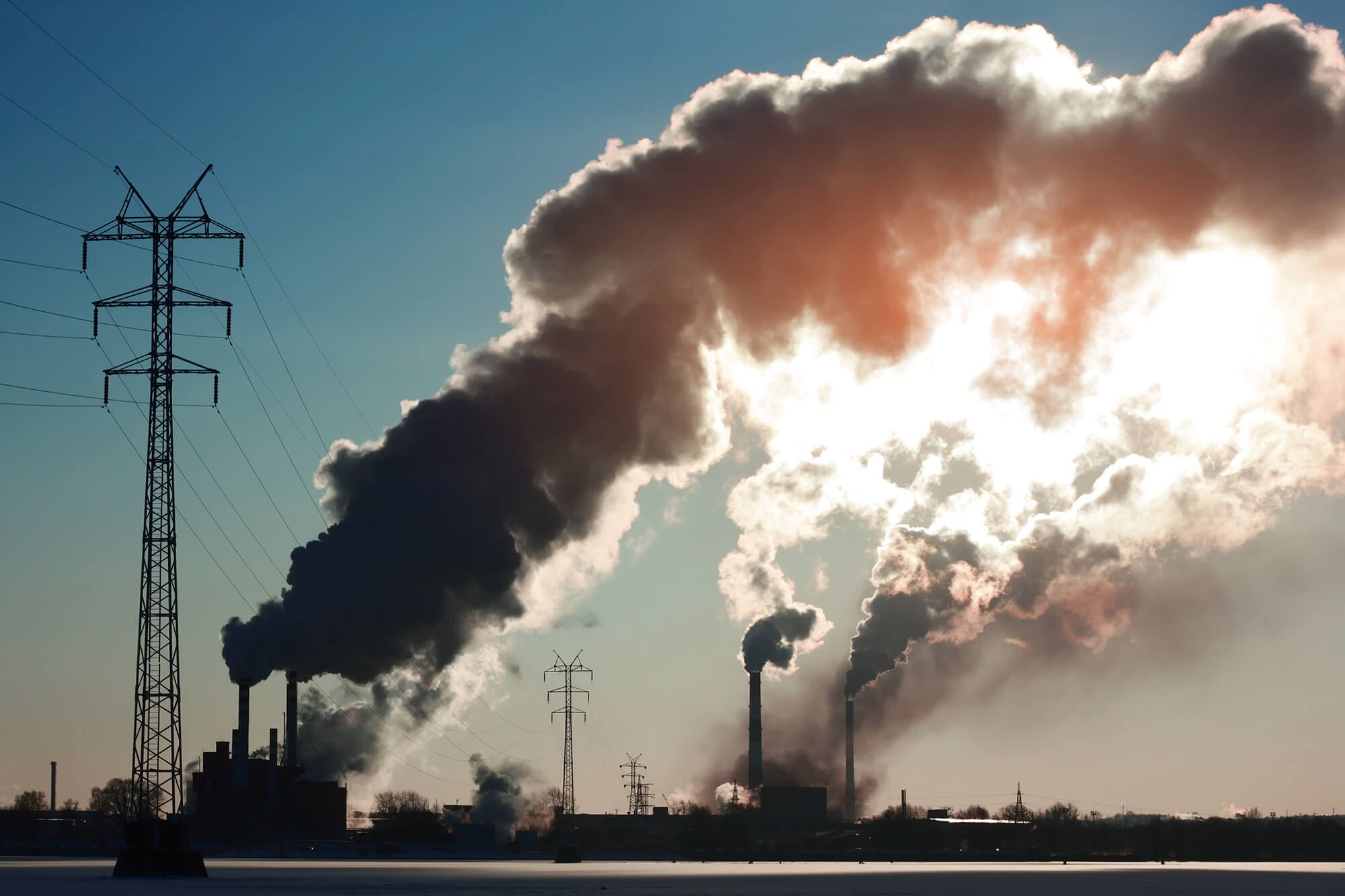
Human activity in the front line
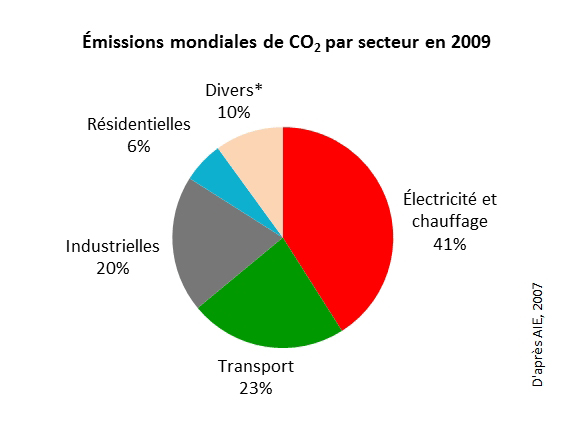
Natural Absorption takes too long…
Biosphere, soils and oceans (natural Carbon sinks) cannot absorb more than 4.5 billion tons (Gton) of carbon per year. We still produce more than twice this amount.
The CO2 we draw from the subsoil piles up into the atmosphere, thus disrupting the delicate mechanisms of climate for many years. Indeed, a decrease in fossil fuel consumption cannot even result in an immediate decline of CO2 atmospheric concentration, which stays for centuries in the atmosphere.
Caption : 3.6 billion tons of carbon in excess!
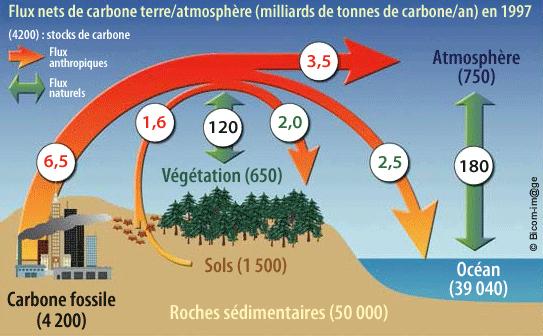
CO2 world emissions linked to human activity reach 30 billion tons (Gton) per year, which corresponds to 8.1 Gton* of carbon: 6.5 Gton (or 80%) emanate from fossil fuel combustion (for heating, lighting, transportation and industry) and 1.6 Gton (20%) from deforestation and agriculture. These Anthropogenic emissions are only partly absorbed by carbon sinks : 2.5 Gton by oceans and 2 Gton by vegetation and soils. This leaves 3.5 C Gton every year that pile up in atmosphere and disrupts climate.
*Conversion :1 ton of CO2 = 0.27 tons of carbon (12/44 ratio)
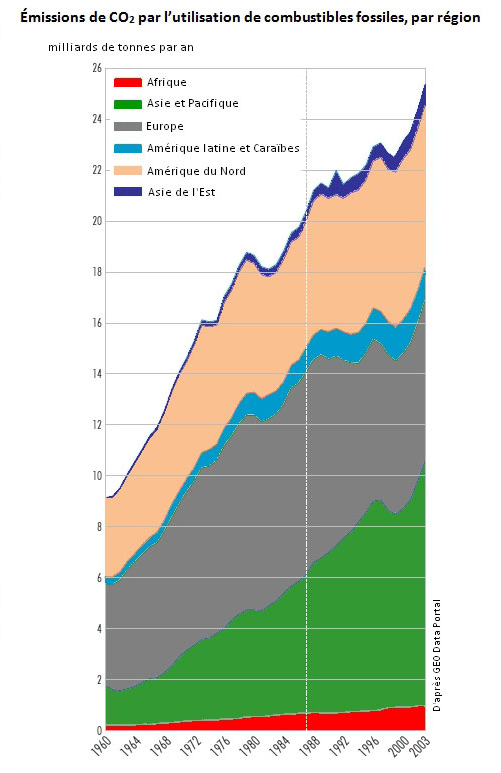
…and CO2 emissions stay on the rise
Fossil fuel production and consumption (oil, gas and coal) keep on intensifying since the industrial era. This rise is linked to the concurrence of two factors: demographic growth on one hand, and our dependency to fossil energies on the other hand.
Two extra billion consumers by 2050
World population keeps growing ever more. Energetic scenarios devised by international experts predict a 50% rise in planetary demand in 20 years from now given the evolution of world population, growing from 7 to 9 billion people by 2050.
Fossil fuels remain the main source of energy
This growing demand in energy poses an even bigger problem to the fight against climate change: alternatives energies are not developed enough to serve as a replacement facing such important demand. Yet GHG emissions should be cut right away! The International Energy Agency (IEA) expects that fossil fuel will still be the main source of energy in 2030.
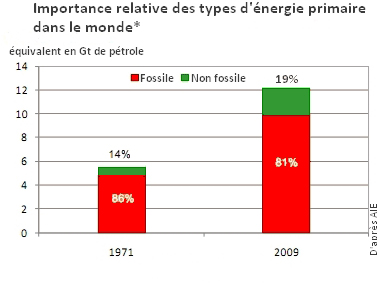
Caption : fossil fuels (gas, oil and coal) today still represent the main source of energy in the world.
According to IEA, at the current rate, CO2 emissions will exceed 37 billion tons per year around 2030. It is therefore necessary to coordinate and carry out solutions that can respond to the urgency of the situation and neutralize GHG emissions without further ado.



